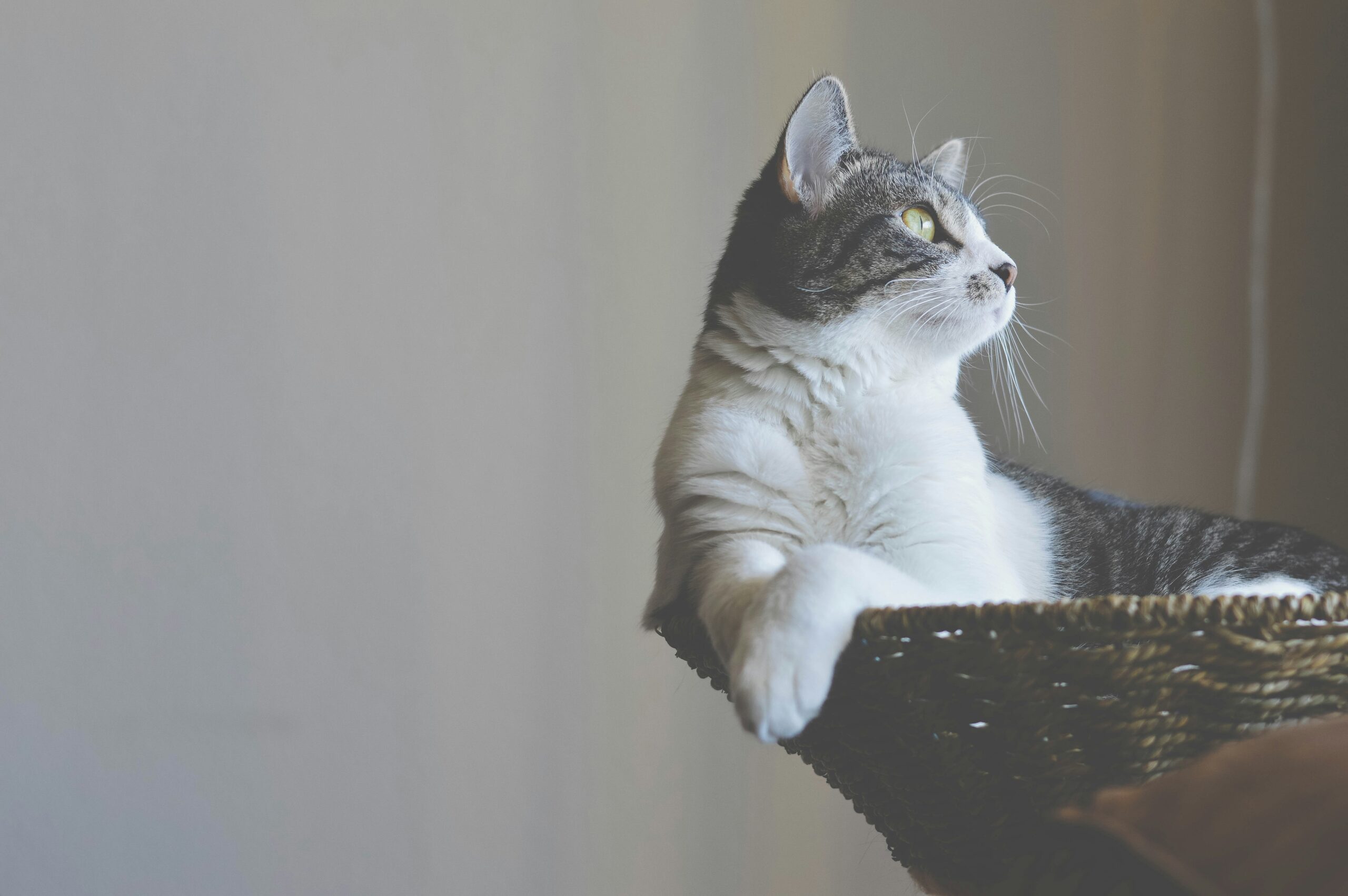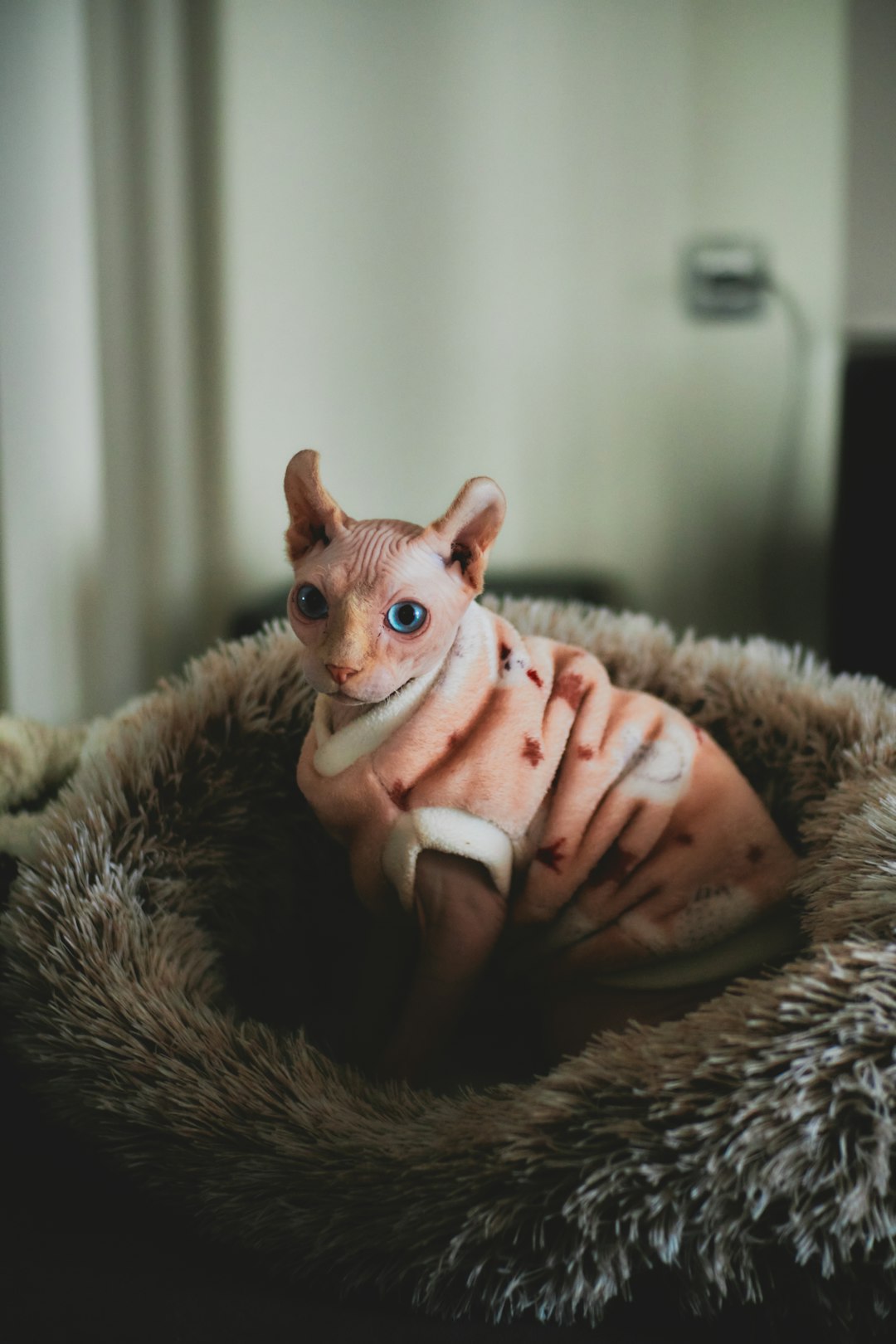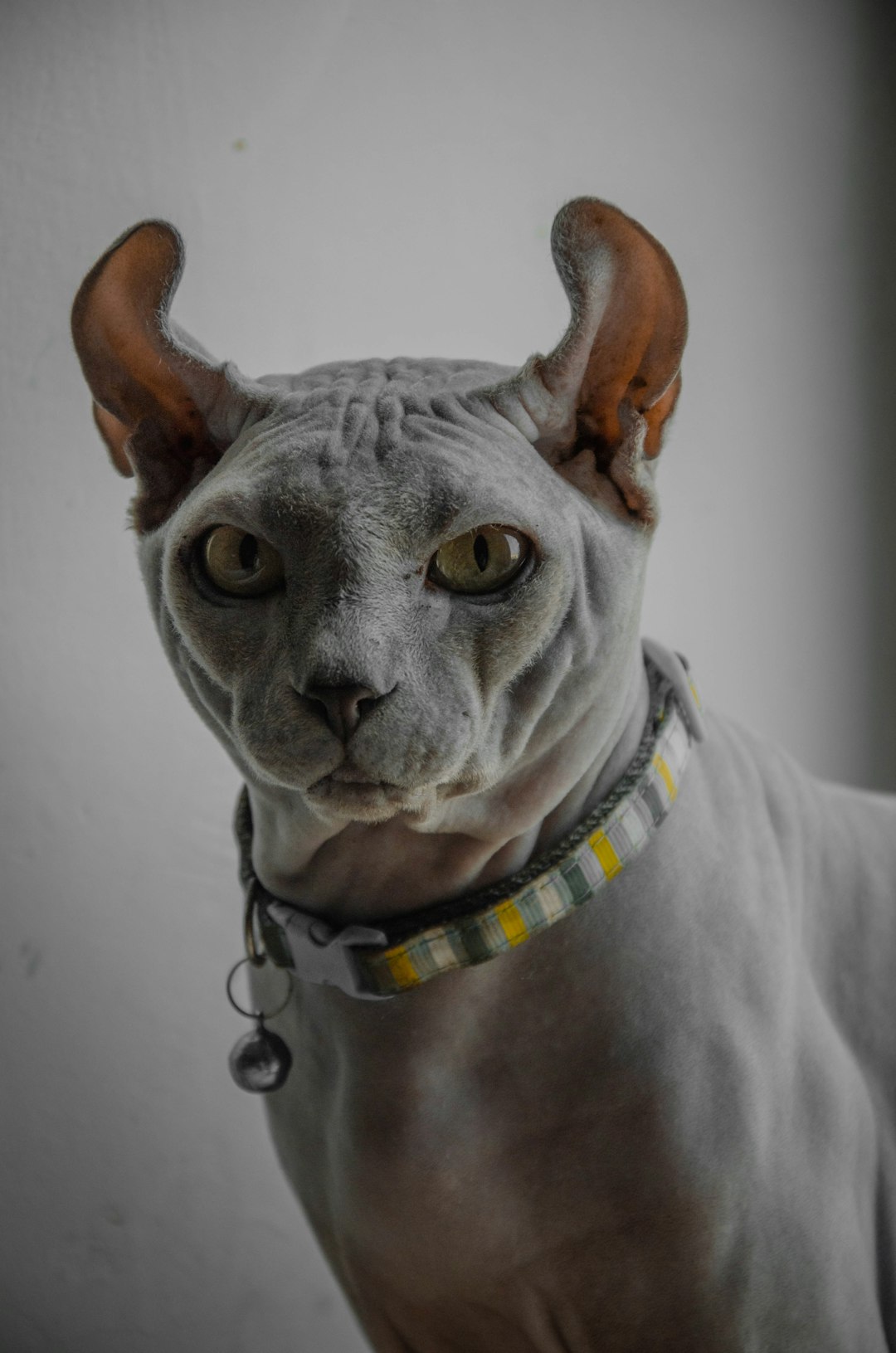Cats communicate their feelings in various ways, with tail movements being one of the most telling signs. If you’ve ever wondered about the “cat wagging tail meaning,” you’re not alone. Observing a cat’s tail can reveal a lot about its mood, whether it’s excitement, annoyance, or playfulness. Understanding these signals not only strengthens your bond with your feline friend but also helps you react appropriately to their emotional state. Join us as we explore the intricacies of feline body language and the significance behind those delightful tail wiggles.
Understanding Feline Body Language
Understanding feline body language is crucial for any cat owner. Cats communicate primarily through their body posture, movements, and especially their tails. The cat wagging tail meaning can vary significantly based on its position and motion.
Here are key aspects to consider:
- Tail Position: The height and angle of the tail can indicate how your cat feels. A high tail generally suggests happiness, while a low or tucked tail often signals fear or submission.
- Tail Movement: The way a cat wags its tail provides valuable insights:
- Slow and Gentle Wag: Indicates curiosity or contemplation.
- Rapid or Jerky Wag: Often a sign of agitation or annoyance.
Comparison of Tail Movements and Their Meanings
| Tail Movement | Emotion/Meaning |
|---|---|
| Slow sway | Contentment or curiosity |
| Rapid flicking | Agitation or annoyance |
| Tucked tail | Fear or submission |
By learning to interpret these signals, you can better understand your feline’s emotions. Remember, the cat wagging tail meaning isn’t just about the wag itself; it’s all about the context!
Common Reasons Cats Wag Their Tails
When observing your feline friend, the cat wagging tail meaning may vary significantly depending on the context. Here are some common reasons why cats wag their tails:
- Excitement: A cat may wag its tail when anticipating play or interaction, hinting at a happy mood.
- Annoyance: A slow, swishing tail indicates irritation. Your cat might feel overwhelmed or bothered by external factors.
- Uncertainty: When a cat’s tail flicks rapidly but remains upright, it often signals curiosity mixed with caution.
- Aggression: Rapid twitching at the tip of the tail can indicate that a cat is feeling threatened or defensive.
- Hunting Instinct: Tail movements during stalking behavior can reflect a heightened focus on prey, indicating readiness to pounce.
Understanding the nuances of cat wagging tail meaning allows you to better interpret your cat’s emotions. By paying close attention to these cues, you can respond appropriately and foster a stronger bond with your pet.
The Connection Between Tail Position and Mood
Understanding the cat wagging tail meaning goes beyond the motion itself; tail position plays a crucial role in interpreting your feline friend’s emotions. Here’s how tail positions can indicate different moods:
- High Tail Position: A tail held high often signifies confidence and happiness. Your cat feels comfortable in its environment.
- Straight Up with a Curve: This position suggests an excited and friendly demeanor, inviting interaction.
- Horizontal Tail: A tail held horizontally may mean your cat is alert or mildly irritated. It’s in a state of observation.
- Low Tail Position: A tail drooping low indicates submission or fear. Your cat might feel threatened or anxious.
- Puffed Up Tail: This is a clear sign of a frightened or aggressive cat. It’s a defensive posture.
Summary Table of Tail Positions and Their Meanings
| Tail Position | Mood Interpretation |
|---|---|
| High | Confident and Happy |
| Curve Up | Playful and Inviting |
| Horizontal | Alert or Mildly Irritated |
| Low | Submissive or Fearful |
| Puffed Up | Frightened or Aggressive |
By recognizing these tail positions, you can effectively decipher the cat wagging tail meaning and better understand your pet’s emotional state.
How Tail Wagging Differs from Dogs
When comparing tail wagging in cats to that of dogs, it’s essential to understand the different cat wagging tail meanings between these two beloved pets. While tail movements convey emotions for both species, their meanings can often diverge significantly.
Cat vs. Dog Tail Wagging: A Comparison
| Aspect | Cats | Dogs |
|---|---|---|
| Purpose of Wagging | Indicates mood and feelings | Expresses excitement, happiness, or eagerness |
| Wagging Style | Often subtle and quick | Usually broad, vigorous, or sweeping |
| Tail Position | Low or high, depending on emotion | Tends to wag higher when happy |
| Context | Can signify irritation or annoyance as well | Generally positive, but can imply tension |
While dogs primarily wag their tails as a joyful greeting, cat wagging tail meaning can signify a range of emotions. A slow, deliberate wag often indicates contemplation or mild irritation, while a rapid flick might express excitement or even aggression.
Thus, when observing tail movements in your feline friend, consider the context and accompanying body language. Recognizing these differences will help you interpret your cat’s feelings more accurately and strengthen your bond with them.
Feline Tail Wagging in Different Situations
Understanding the cat wagging tail meaning requires observing the context in which it happens. Cats express their feelings through various situations, and their tail movements can indicate different emotions. Here’s a breakdown of common scenarios:
- Friendly Approach:
- A cat that wags its tail gently while approaching you often shows affection or friendliness.
- Playful Intent:
- If you notice quick, twitching movements, your cat may be in a playful mood, ready for some fun.
- Agitation or Annoyance:
- A tail that thumps or is held low may signify irritation. The cat may want to be left alone.
- Excitement:
- A rapidly wagging tail with a vertical position often means your cat is excited, perhaps about playtime or hunting.
Comparison of Tail Movements
| Situation | Tail Position | Tail Movement | Cat’s Emotion |
|---|---|---|---|
| Friendly Approach | Upright/Straight | Gentle Wagging | Affection |
| Playful Engagement | Horizontal/Level | Fast Twitching | Playfulness |
| Annoyance or Irritation | Low | Slow Thumping | Agitation |
| Excitement | Upright | Rapid Wagging | Excitement |
These tail movements are essential in deciphering the cat wagging tail meaning. Pay attention to the context to respond appropriately to your cat’s emotions!
Signs of Aggression vs. Playfulness
Understanding the cat wagging tail meaning is essential for deciphering your feline’s emotional state. Cats communicate a range of feelings through their tail movements. Recognizing the signs of aggression versus playfulness can help you better interact with your pet.
Aggressive Tail Wagging:
- Fast and Sharp Movements: If your cat’s tail lashes back and forth quickly, it may indicate irritation or anger.
- Raising of the Tail: A stiff and raised tail accompanied by aggressive wagging can signal an impending attack.
- Body Language: Aggressive cats often have arched backs and flattened ears.
Playful Tail Wagging:
- Slow and Gentle Movements: A slow swish usually indicates a relaxed state, suggesting your cat is in the mood to play.
- Bending and Twisting: If your cat’s tail moves in playful arcs or curls, this indicates curiosity and enjoyment.
- Body Language: A relaxed body posture with ears up shows your cat is feeling friendly and playful.
By understanding the cat wagging tail meaning, you can create a more harmonious environment for your feline companion, ensuring their emotional needs are met.
Interpreting Rapid vs. Slow Tail Movements
When observing your cat, pay close attention to the speed of their tail movements as it reveals a lot about their emotional state. Understanding the cat wagging tail meaning can help you connect with your feline friend more effectively. Here’s a quick breakdown:
Rapid Tail Movements
- Excitement: A cat with a rapidly wagging tail often experiences high energy levels. They may be excited to see you or eagerly anticipating playtime.
- Irritation: If your cat’s tail is flicking quickly, they might feel annoyed or agitated. This can signal that they need space or are currently overwhelmed.
Slow Tail Movements
- Contentment: A slowly waving or swaying tail indicates serenity. Your cat feels safe and relaxed in their environment.
- Curiosity: A gentle flick at the tip of the tail often suggests interest or curiosity about something in their surroundings.
In conclusion, understanding the different speeds of your cat’s tail movements can provide insights into their mood. This knowledge will enhance your bond and ensure a happier environment for both of you. Recognizing the cat wagging tail meaning fosters better communication with your pet.
Cultural Beliefs Around Cats and Their Tails
Throughout history, various cultures have developed unique beliefs about cats and their tail movements. Understanding the cat wagging tail meaning from different perspectives can shed light on their complex behaviors. Here are a few intriguing cultural insights:
- Egyptian Reverence: Ancient Egyptians revered cats and believed their tail movements signified answers from the divine. A slow wag indicated approval, while a rapid wag could signify a warning of potential threats.
- Japanese Folklore: In Japan, the “Maneki-neko” or beckoning cat has tail positions that symbolize prosperity and good fortune. A wagging tail could suggest a welcoming energy, inviting positive interactions.
- West African Perspectives: Some West African cultures view a cat’s tail movements as a bridge between the spirit world and humans. For them, a cat wagging its tail suggests heightened sensitivity to surrounding energies.
Understanding these cultural beliefs enriches the cat wagging tail meaning by connecting our modern observations with historical interpretations. By appreciating the diversity of these interpretations, we gain a deeper insight into our feline companions and their expressive tails.
How to Respond to Your Cat’s Tail Wagging
Understanding your cat’s tail movements can enhance your bond with your feline friend. When you notice your cat wagging its tail, it’s essential to interpret the behavior correctly based on the cat wagging tail meaning. Here’s how to respond effectively:
- Observe Context: Check the environment and situation. Is your cat excited, agitated, or just playing? Recognizing this helps you determine your next steps.
- Give Space: If your cat’s tail is flicking rapidly, it might signify annoyance or irritation. Respect its space and avoid direct interaction until it appears calmer.
- Engage with Toys: If your cat is wagging its tail in a playful manner, use toys to foster interaction. This can channel its energy positively.
- Calm Presence: For cats showing slow, sweeping tail movements, approach slowly and softly. This often indicates a relaxed or inquisitive state.
- Communicate Gently: Speak softly to reassure your cat while observing its body language.
By responding appropriately to your cat’s tail wagging, you can foster trust and a deeper understanding of its emotions, aligning with the true cat wagging tail meaning.
Tips for Observing and Understanding Feline Emotions
Decoding your cat’s emotions through their tail movements can be an intriguing experience. Here are some tips to better understand the cat wagging tail meaning and improve your bond with your pet:
- Observe Tail Position: Note the height and position:
- High and upright: Content or happy.
- Twitching or low: Anxious or annoyed.
- Watch for Context: Pay attention to the situation:
- Is your cat in a playful mood or feeling threatened?
- Consider other body language cues, such as ears and whiskers.
- Differentiate Wagging Styles:
- Slow, languid wag: Your cat might be relaxed, but still alert.
- Quick, sharp movements: This often suggests agitation or excitement.
- Monitor Other Behaviors: Combine observations with actions:
- Purring: Generally indicates happiness, even with tail wagging.
- Hissing or growling: A clear sign of distress.
By focusing on these cues, you can easily interpret your cat’s emotions and understand the full cat wagging tail meaning in various scenarios. This awareness fosters a deeper connection between you and your feline friend.
Frequently Asked Questions
What does it mean when a cat wags its tail quickly?
When a cat wags its tail quickly, it usually indicates high excitement or agitation. This rapid motion can signal various emotions, often reflecting a playful state or, conversely, frustration. Cats that wag their tails this way might be in the midst of playtime, ready to pounce, or they might be feeling overwhelmed, especially if they are overstimulated or anxious. Observing other body language cues, like ears position or vocalizations, can provide clearer insight into their emotional state.
Is tail wagging a sign of happiness in cats?
While tail wagging can signal happiness in some cats, the specifics can vary greatly depending on the context and the individual cat’s personality. A cat that is gently swishing its tail may be expressing contentment and happiness, particularly when petted or during interaction. However, it’s important to interpret this behavior alongside other signs, as cats can also wag their tails when they are uncertain or annoyed. Always consider the whole picture of your cat’s body language for accurate emotional assessment.
Can a cat’s tail position indicate their mood?
Absolutely! A cat’s tail position is a key indicator of their mood. For instance, a tail held high often signifies confidence and happiness, while a low or tucked tail can indicate fear or submission. A puffed-up tail may suggest that a cat is scared or trying to appear larger in the face of a threat. Understanding these tail positions can help you gauge how your feline friend is feeling in different situations, enabling better interactions.
What other body language should I watch for with my cat?
In addition to tail movements, a cat’s ears, eyes, and whiskers can reveal important information about its emotional state. Ears that are pointed forward typically express curiosity or interest, while ears flat against the head indicate fear or aggression. The position of their whiskers is also significant; whiskers pointed forward may suggest that a cat is alert or ready to engage. Observing these cues in conjunction with tail movements can give a more comprehensive understanding of your cat’s feelings and intentions.



